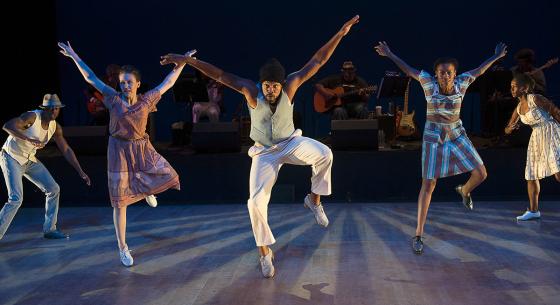Tap Dance: A Valuable Asset to a Movement Artist
Guest blog from U of M student and MinnesoTap officer, Erik Hunder. I started dancing at a small local studio 12 years ago. Because it was the only style offered that didn’t require flexibility and pointed feet, tap dance and I quickly became good friends, and it wasn’t long before I fell in love. I was always fascinated and amazed by all of the sounds and complex rhythms that were possible, and because I grew up in a family of drummers, my relationship with this percussive dance style was a no-brainer. My dad and brother made music on the drums, and I made music with my feet. Now, years later, as a dance major here at the University of Minnesota and dancer of all different genres, I am so thankful for my tap dance training. I speak from personal experience when I say that tap dancing is a valuable asset as a movement artist. Not only is it great to include on a resume (every paid gig I’ve gotten so far in my dance career has involved tap dancing to some degree), but it offers a number of other benefits as well. Tap dancing has given me a strong sense of rhythm and has given me tools to more easily grasp complex patterns and rhythms when learning choreography. Things like syncopation, swing, accents, and complicated counting are commonplace in tap dance, and these things are integral to other styles as well. When I dance, I find myself disciplined to the timing of movement, whether that means adhering to counts, staying with music, or simply being aware of the timing of my movement in relation to another dancer. Tap dance training has also made me to hear music differently. When tap dancing to music, you often have to hone in on a specific rhythm or beat within the song, and it’s not always the one that is the most prominent or easiest to hear. Tap dance illuminates parts of music that may have otherwise gone unnoticed or seemed insignificant. This awareness proves to be helpful when adding dynamics and accents to movement and can be a helpful tool when choreographing. Not only is tap dance awesome on its own, but it can also inform work in other dance styles and help make more dynamic movers and choreographers.
I could not be more excited for Dorrance Dance to come to Northrop. I am so grateful that Northrop is supporting this up-and-coming artist, allowing us to experience Michelle Dorrance’s work in the Twin Cities. Not only is she pushing boundaries by bringing tap dance to the concert dance stage, but she is also pushing boundaries of tap dance itself. Her work is unlike anything I’ve seen before; she utilizes different creative and innovative elements while maintaining tap dance’s history and tradition. This show is definitely a must-see.
You can see me perform with MinnesoTap, a tap dance student group here at the U of M, in the Northrop atrium before and after the show!
